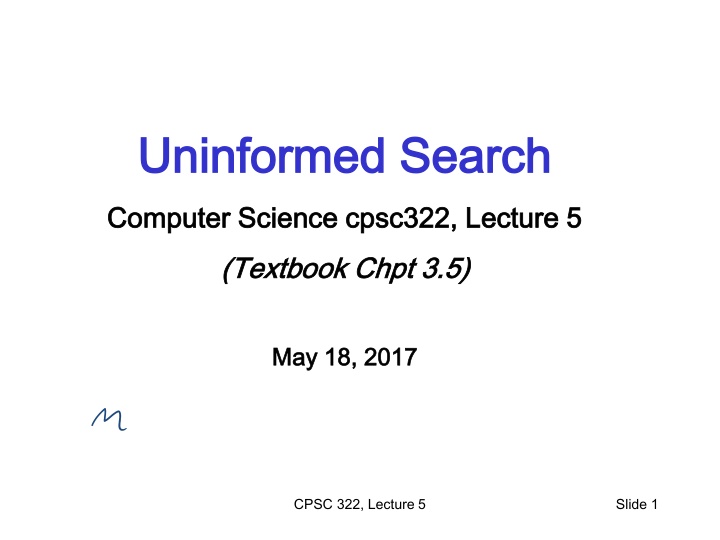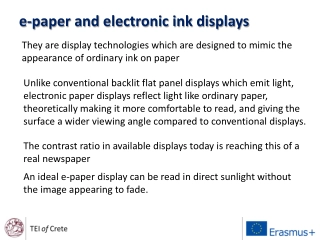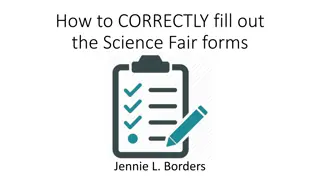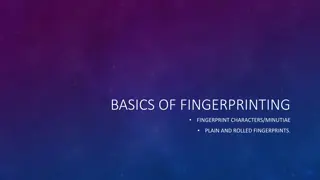
Principles of Uninformed Search in AI Agents
Explore the basic principles of search mechanisms in AI agents, focusing on uninformed search techniques on deterministic planning agent models. Learn about graph search algorithms, comparison of search strategies, and complexities associated with searching algorithms.
Download Presentation

Please find below an Image/Link to download the presentation.
The content on the website is provided AS IS for your information and personal use only. It may not be sold, licensed, or shared on other websites without obtaining consent from the author. If you encounter any issues during the download, it is possible that the publisher has removed the file from their server.
You are allowed to download the files provided on this website for personal or commercial use, subject to the condition that they are used lawfully. All files are the property of their respective owners.
The content on the website is provided AS IS for your information and personal use only. It may not be sold, licensed, or shared on other websites without obtaining consent from the author.
E N D
Presentation Transcript
Uninformed Search Uninformed Search Computer Science cpsc322, Lecture 5 Computer Science cpsc322, Lecture 5 (Textbook (Textbook Chpt Chpt 3.5) 3.5) May 18 May 18, 2017 , 2017 CPSC 322, Lecture 5 Slide 1
Recap Recap Search Search is a key computational mechanism in many AI agents AI agents We will study the basic principles of search on the simple deterministic planning agent model deterministic planning agent model Generic search approach Generic search approach: define a search space graph, start from current state, incrementally explore paths from current state until goal state is reached. CPSC 322, Lecture 4 Slide 2
Searching: Graph Search Algorithm with three bugs Searching: Graph Search Algorithm with three bugs Input: Input: a graph, a start node, Boolean procedure goal(n) that tests if n is a goal node. frontier := { g : g is a goal node }; while while frontier is not empty: select select and remove remove path n0, n1, , if if goal(nk) return return nk ; for every for every neighbor n of nk add add n0, n1, , , , nk to frontier; end end while while No solution found No solution found The goal function defines what is a solution. The neighbor relationship defines the graph. Which path is selected from the frontier defines the search strategy. , , nk from frontier; CPSC 322, Lecture 5 Slide 3
Lecture Overview Lecture Overview Recap Recap Criteria to compare Search Strategies Simple (Uninformed) Search Strategies Depth First Breadth First CPSC 322, Lecture 5 Slide 4
Comparing Searching Algorithms: will it find a Comparing Searching Algorithms: will it find a solution? the best one? solution? the best one? Def. (complete): Def. (complete): A search algorithm is complete whenever at least one solution exists, the algorithm is guaranteed to find a solution is guaranteed to find a solution within a finite amount of time. complete if, Def. (optimal): Def. (optimal): A search algorithm is optimal it finds a solution , it is the best solution optimal if, when CPSC 322, Lecture 5 Slide 5
Comparing Searching Algorithms: Complexity Comparing Searching Algorithms: Complexity Def. (time complexity) Def. (time complexity) The time complexity time complexity of a search algorithm is an expression for the worst worst- -case case amount of time it will take to run, expressed in terms of the maximum path length maximum path length m m and the maximum branching factor maximum branching factor b b. Def. (space complexity) : Def. (space complexity) : The space complexity algorithm is an expression for the worst memory that the algorithm will use (number of nodes), Also expressed in terms of m m and space complexity of a search worst- -case case amount of and b b. CPSC 322, Lecture 5 Slide 6
Lecture Overview Lecture Overview Recap Recap Criteria to compare Search Strategies Simple (Uninformed) Search Strategies Depth First Breadth First CPSC 322, Lecture 5 Slide 7
Depth Depth- -first Search: DFS first Search: DFS Depth- -first search first search treats the frontier as a stack It always selects one of the last elements added to the frontier. Example: the frontier is [p1, p2, , pr ] neighbors of last node of p1 (its end) are {n1, , nk} What happens? p1 is selected, and its end is tested for being a goal. New paths are created attaching {n1, , nk} to p1 These replace p1 at the beginning of the frontier. Thus, the frontier is now [(p1, n1), , (p1, nk), p2, , pr] . NOTE: p2 is only selected when all paths extending p1 have been explored. Depth stack CPSC 322, Lecture 5 Slide 8
Depth Depth- -first Search: Analysis of DFS first Search: Analysis of DFS Is DFS complete? Is DFS optimal? CPSC 322, Lecture 5 Slide 10
Depth Depth- -first Search: Analysis of DFS first Search: Analysis of DFS What is the time complexity, if the maximum path length is m and the maximum branching factor is b ? O(bm) O(bm) O(mb) O(b+m) What is the space complexity? O(bm) O(b+m) O(bm) O(mb) CPSC 322, Lecture 5 Slide 11
Depth Depth- -first Search: Analysis of DFS Summary first Search: Analysis of DFS Summary Is DFS complete? Depth-first search isn't guaranteed to halt on graphs with cycles. However, DFS is is complete for finite acyclic graphs. Is DFS optimal? What is the time complexity, if the maximum path length is m and the maximum branching factor is b ? The time complexity is ? ?: must examine every node in the tree. Search is unconstrained by the goal until it happens to stumble on the goal. What is the space complexity? Space complexity is ? ? the longest possible path is m, and for every node in that path must maintain a fringe of size b. CPSC 322, Lecture 5 Slide 12
Analysis of DFS Analysis of DFS Def. Def. : A search algorithm is complete if whenever there is at least one solution, the algorithm is guaranteed to find it within a finite amount of time. Is DFS complete? No If there are cycles in the graph, DFS may get stuck in one of them see this in AISpace by adding a cycle to Simple Tree e.g., click on Create tab, create a new edge from N7 to N1, go back to Solve and see what happens
Analysis of DFS Analysis of DFS Def.: A search algorithm is optimal if when it finds a solution, it is the best one (e.g., the shortest) Is DFS optimal? Yes No E.g., goal nodes: red boxes 14
Analysis of DFS Analysis of DFS Def.: A search algorithm is optimal if when it finds a solution, it is the best one (e.g., the shortest) Is DFS optimal? No It can stumble on longer solution paths before it gets to shorter ones. E.g., goal nodes: red boxes see this in AISpace by loading Extended Tree Graph and set N6 as a goal e.g., click on Create tab, right-click on N6 and select set as a goal node 15
Analysis of DFS Analysis of DFS Def.: The time complexity of a search algorithm is the worst-case amount of time it will take to run, expressed in terms of - maximum path length m - maximum forward branching factor b. What is DFS s time complexity, in terms of m and b ? O(bm) O(b+m) O(bm) O(mb) E.g., single goal node -> red box 16
Analysis of DFS Analysis of DFS Def.: The time complexity of a search algorithm is the worst-case amount of time it will take to run, expressed in terms of - maximum path length m - maximum forward branching factor b. What is DFS s time complexity, in terms of m and b ? O(bm) In the worst case, must examine every node in the tree E.g., single goal node -> red box 17
Analysis of DFS Analysis of DFS Def.: The space complexity of a search algorithm is the worst-case amount of memory that the algorithm will use (i.e., the maximal number of nodes on the frontier), expressed in terms of - maximum path length m - maximum forward branching factor b. What is DFS s space complexity, in terms of m and b ? O(bm) O(b+m) O(bm) O(mb) See how this works in 18
Analysis of DFS Analysis of DFS Def.: The space complexity of a search algorithm is the worst-case amount of memory that the algorithm will use (i.e., the maximum number of nodes on the frontier), expressed in terms of - maximum path length m - maximum forward branching factor b. What is DFS s space complexity, in terms of m and b ? O(bm) - for every node in the path currently explored, DFS maintains a path to its unexplored siblings in the search tree - Alternative paths that DFS needs to explore The longest possible path is m, with a maximum of b-1 alterative paths per node See how this works in - 19
Depth Depth- -first Search: When it is appropriate? first Search: When it is appropriate? A.There are cycles B.Space is restricted (complex state representation e.g., robotics) C.There are shallow solutions D.You care about optimality CPSC 322, Lecture 5 Slide 20
Depth Depth- -first Search: When it is appropriate? first Search: When it is appropriate? Appropriate Appropriate Space is restricted (complex state representation e.g., robotics) There are many solutions, perhaps with long path lengths, particularly for the case in which all paths lead to a solution Inappropriate Inappropriate Cycles There are shallow solutions CPSC 322, Lecture 5 Slide 21
Why DFS need to be studied and understood? Why DFS need to be studied and understood? It is simple enough to allow you to learn the basic aspects of searching (When compared with breadth first) It is the basis for a number of more sophisticated / useful search algorithms CPSC 322, Lecture 5 Slide 22
Lecture Overview Lecture Overview Recap Recap Simple (Uninformed) Search Strategies Depth First Breadth First CPSC 322, Lecture 5 Slide 23
Breadth Breadth- -first Search: BFS first Search: BFS Breadth-first search treats the frontier as a queue it always selects one of the earliest elements added to the frontier. queue Example: the frontier is [p1,p2, , pr] neighbors of the last node of p1 are {n1, , nk} What happens? p1 is selected, and its end tested for being a path to the goal. New paths are created attaching {n1, , nk} to p1 These follow pr at the end of the frontier. Thus, the frontier is now [p2, , pr, (p1, n1), , (p1, nk)]. p2 is selected next. CPSC 322, Lecture 5 Slide 24
Illustrative Graph Illustrative Graph - - Breadth Breadth- -first Search first Search CPSC 322, Lecture 5 Slide 25
Breadth Breadth- -first Search: Analysis of BFS first Search: Analysis of BFS Is BFS complete? Is BFS optimal? CPSC 322, Lecture 5 Slide 26
Breadth Breadth- -first Search: Analysis of BFS first Search: Analysis of BFS What is the time complexity, if the maximum path length is m and the maximum branching factor is b ? O(bm) O(bm) O(mb) O(b+m) What is the space complexity? O(bm) O(b+m) O(bm) O(mb) CPSC 322, Lecture 5 Slide 27
Analysis of Breadth Analysis of Breadth- -First Search Is BFS complete? Yes First Search In fact, BFS is guaranteed to find the path that involves the fewest arcs (why?) What is the time complexity, if the maximum path length is m and the maximum branching factor is b? The time complexity is ? ? must examine every node in the tree. The order in which we examine nodes (BFS or DFS) makes no difference to the worst case: search is unconstrained by the goal. What is the space complexity? Space complexity is ? ? CPSC 322, Lecture 5 Slide 28
Using Breadth Using Breadth- -first Search When is BFS appropriate? space is not a problem it's necessary to find the solution with the fewest arcs although all solutions may not be shallow, at least some are first Search When is BFS inappropriate? space is limited all solutions tend to be located deep in the tree the branching factor is very large CPSC 322, Lecture 5 Slide 29
What have we done so far? What have we done so far? GOAL: study search study search, a set of basic methods , a set of basic methods underlying many intelligent agents underlying many intelligent agents GOAL: AI agents can be very complex and sophisticated Let s start from a very simple one, the deterministic, goal goal- -driven agent driven agent for which: he sequence of actions and their appropriate ordering is the solution We have looked at two search strategies DFS and BFS: We have looked at two search strategies DFS and BFS: To understand key properties of a search strategy They represent the basis for more sophisticated (heuristic / intelligent) search the deterministic, CPSC 322, Lecture 5 Slide 31
Learning Goals for todays class Learning Goals for today s class Apply basic properties of search algorithms: completeness, optimality, time and space complexity of search algorithms. Select the most appropriate search algorithms for specific problems. BFS vs DFS vs IDS vs BidirS- LCFS vs. BFS A* vs. B&B vs IDA* vs MBA* CPSC 322, Lecture 5 Slide 32
To test your understanding of todays class Work on Practice Practice Exercise Exercise 3.B http://www.aispace.org/exercises.shtml Next Class Next Class Iterative Deepening Search with cost (read textbook.: 3.7.3, 3.5.3) (maybe) Start Heuristic Search (textbook.: start 3.6) CPSC 322, Lecture 5 Slide 33
Recap: Comparison of DFS and BFS Recap: Comparison of DFS and BFS Complete Optimal Time Space DFS BFS CPSC 322, Lecture 6 Slide 34






















